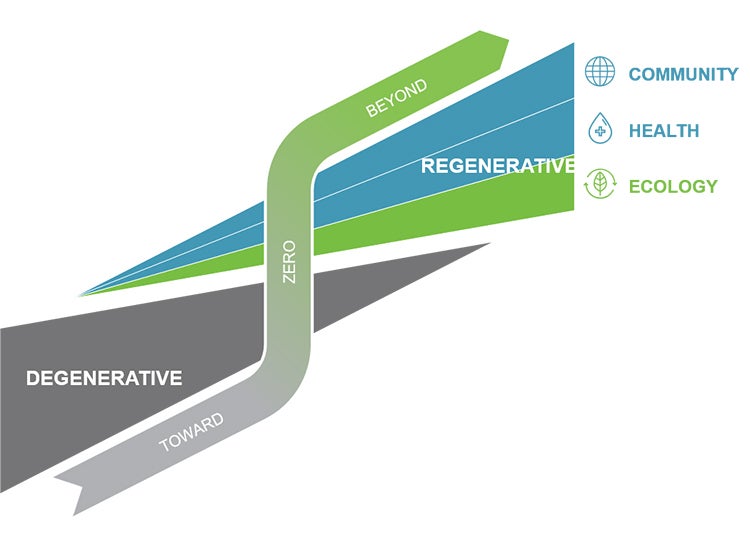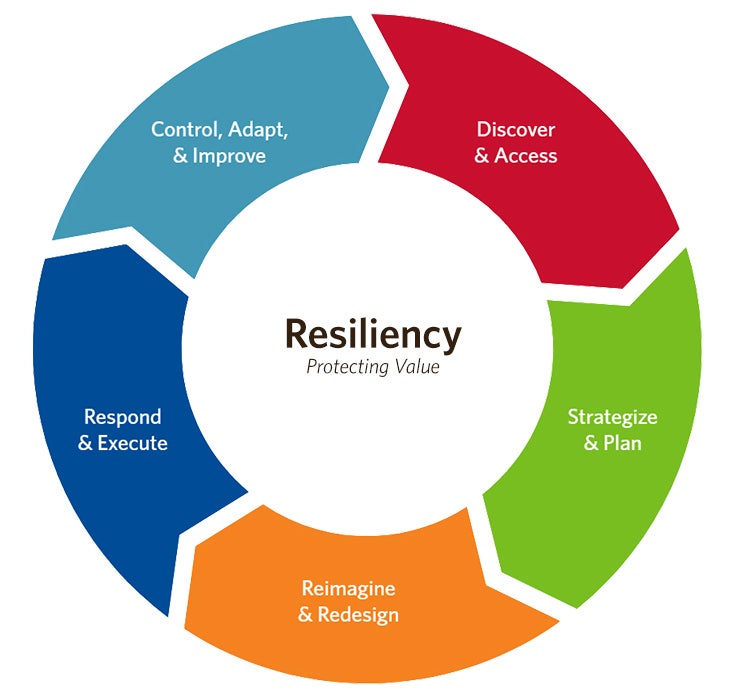
Academic Health Center Sustainability and Resiliency
Sustainability and Resiliency
Academic health center campuses encompass large areas within their communities and hold both a social and planetary responsibility to be sustainable, and eventually regenerative, environments. The ultimate goal is to design campuses, buildings and precincts that give more than they take. Our holistic, sustainable design and consulting services cover parametric building performance analytics, health and wellness analytics, resiliency planning and net-zero energy, water and waste design — all with detailed life cycle cost analysis at any scale.

Net-Zero and Carbon Balancing
We consider all categories of carbon impacts when designing for a net-positive carbon project. Both operational and embodied carbon are incorporated into a balancing equation that seeks to produce facilities that are carbon positive for all carbon categories and allow the buildings to act as “Carbon Banks.” We utilize proprietary parametric energy modeling software and industry material life cycle analysis software to achieve this balance.
Campus and City Decarbonization: Resiliency Planning and Design
Building upon net-zero carbon design for buildings, we’ve executed campus and city decarbonization plans using parametric energy modeling and detailed life cycle cost analysis. Experts from our power, renewables, code and economic teams work with our architects and engineers to create decarbonization roadmaps for our clients. We have completed over 50 large-scale resiliency plans for cities, municipalities and campuses. In addition to planning for natural disasters and climate risk, we employ our Resiliency Design Assessment tool for vertical structures that recommends specific design strategies based upon natural disaster potential and climate risk.

- Discover and Access: Understand the community's regional characteristics, needs and goals. Identify and quantify threats using scientific analysis and engineering models. Analyze risks and vulnerabilities. Determine failure modes and consequences to aid and inform decision making.
- Strategize and Plan: Coordinate social, economic and environmental concerns to arrive at a balanced solution. Develop long-term resiliency plan to optimize long-term value.
- Reimagine and Redesign: Focus lessons learned and strategies developed within the initial steps to design for resiliency.
- Respond and Execute: Harden structures to reduce the risk of damage during disasters. Develop response and recovery plans for potential disasters. Implement recovery plans in response to disasters.
- Control, Adapt and Improve: Conduct post-event analysis to identify additional controls and adaptation strategies to continue the iterative process.
Emergency Preparedness
Academic health centers have been significantly impacted by hurricanes, flooding, earthquakes and health disasters such as pathogen outbreaks and pandemics — and so have the communities in which they reside. As the health and educational center of their community, planning for continuity of operations and damage mitigation and recovery is critical in these specialized facilities. With plans in place ahead of any emergency scenario, staff, caregivers, researchers and other personnel should know exactly how to respond to assist their communities.

